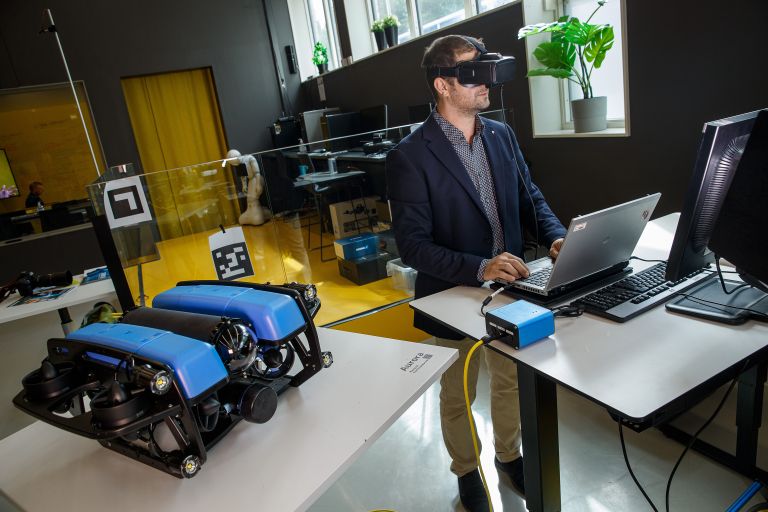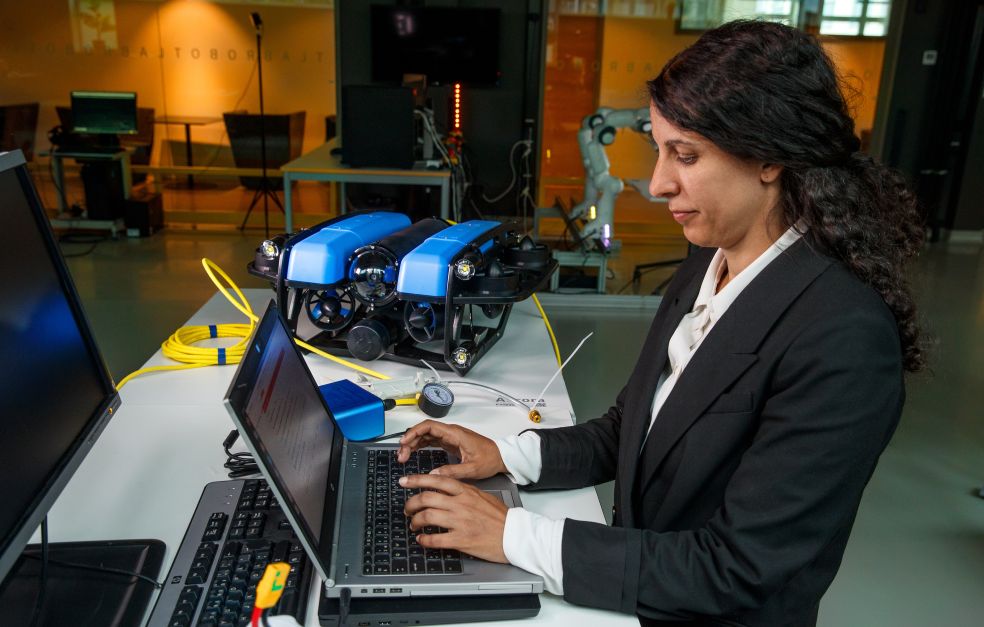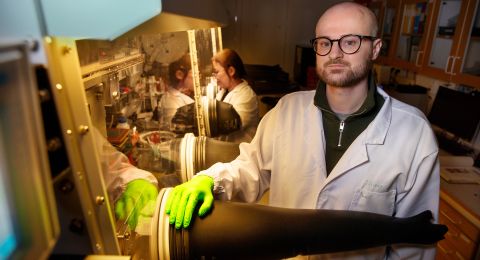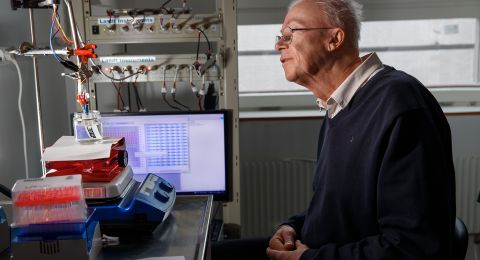Wallenberg AI, Autonomous Systems and Software Program (WASP)
Host university:
Linköping University
Other partner universities:
Chalmers University of Technology, KTH Royal Institute of Technology, and Lund and Umeå Universities
“Affiliated Groups of Excellence”:
At Uppsala University, Örebro University and Luleå University of Technology
International partner universities:
Stanford, Berkeley, MIT, NTU Singapore and Aalto University, ETH Zurich, Caltech
Grant:
SEK 5.1 billion during 2015–2031
Total funding of about SEK 6.5 billion, including funding from universities and industrial stakeholders
“The mission of the WASP research program is to ensure Sweden’s competitiveness in the three areas of artificial intelligence, Autonomous systems, and software and to conduct excellent basic research for the benefit of Sweden as a nation. WASP is putting Sweden in a position to contribute to one of the fastest moving fields in the world and also take effective advantage of opportunities created,” says Anders Ynnerman, who was the WASP program director for five years until the end of 2024, before taking over as chairperson of the program.
Amy Loutfi, professor of computer science and the new program director, adds that the program has also been crucial in building bridges between academia, industry and society.
“WASP is more than collaboration; it is a ‘community.’ We’re working systematically to create meeting places to bring together academia, industry and other stakeholders. There are now very good opportunities to get in touch with the program,” she adds.
The research program began in 2015 and has gradually expanded its resources and fields, including cybersecurity and the “AI for Science” initiative, which targets the scientific community to facilitate and increase the use of artificial intelligence in all areas of research, aiming to enhance opportunities for new scientific discoveries.
Autonomous software on the rise
“The clear impact of WASP can be seen when our methods and tools are used in areas ranging from climate and environmental issues, materials science to life sciences. When developing enabling technologies, you might say we create tools that can be used for almost anything. It’s a little tricky to communicate the value of the program, since we can claim to be important for almost everything,” says Ynnerman.
More specifically, the program involves research that can be used to create smart systems in cities, systems that control vehicles and traffic systems, autonomous mines and warehouses, smart robots that can see and understand their surroundings, as well as data-driven AI and advanced mathematics that can interpret, analyze, and present large amounts of data leading to new medicines, or analysis and decision support for doctors, lawyers, financial systems, or image recognition, language models, translation programs and so much more.
According to Loutfi and Ynnerman, the program is “AI-heavy,” but other aspects of autonomy and software are important cornerstones of the program. They elaborate:
“It’s a lot about ensuring that systems work as intended, but we’re now also seeing autonomous software – self-repairing and self-debugging software.”
Another area of great importance is the fundamental mathematics of AI.
“The research fields included in the program and their integration are essential elements in technology of the future,” says Loutfi.
“It’s almost as though we’re running a small university. On average, we examine one PhD candidate every week.
The program is Sweden’s largest single private research initiative ever, and employs about 900 researchers, of whom half are doctoral students.
“It’s almost as though we’re running a small university. On average, we examine one PhD candidate every week. The next challenge is to ensure that their knowledge is put to use by industry and in society. Large companies generally have the capacity to recruit people with the necessary skills, but it is more difficult for small and medium-sized enterprises, which could possibly benefit most of all from those skills. Targeted initiatives are needed to address this problem,” says Ynnerman.
Right from the outset the program also managed to recruit several eminent foreign researchers to the program.
“International recruitment has exceeded our expectations. We have also seen a huge change in the Swedish landscape during the course of the program. Sweden has substantially advanced its position in this field,” comments Loutfi.
WARA – research arenas and meeting places
They both agree that the program started at exactly the right time before the explosive growth following in the wake of major language models such as ChatGPT.
“Those who established the program really had a sensitive antenna for what was going to become important. This is also a characteristic of the Foundation’s other initiatives. The Foundation possesses both the ability and the muscle to identify needs at an early stage,” says Ynnerman.
One success factor for WASP that both Ynnerman and Loutfi mention is the assembly of new research teams. The program has also served as a model for some of the Foundation’s other major research programs, such as the WISE materials research program, and DDLS – Data-Driven Life Science. All programs collaborate actively with each other.
Basic research and knowledge development are fundamental to the program, but there is another key element – knowledge transfer and application.
“In this new era, the distance between basic research and application is short. Here, WARA – the program’s research arenas – play a vital role. The arenas serve as a meeting place between academia, industry and society, involving an exchange of knowledge between different actors parties,” explains Ynnerman.
He stresses that a key criterion for inclusion is the existence of underlying excellent research. An exciting application does not suffice in itself.
At present the program is set to run until 2031. Although that may seem to be far in the future, WASP is considering the future beyond 2030.
“Skills injection is a key phrase that is intended to characterize the program. The success of the program also validates that Sweden has a lot to offer as a knowledge intensive nation,” Loutfi concludes.
Text: Carina Dahlberg
Translation: Maxwell Arding
Facts about WASP:
The research program is a major initiative to support basic research, postgraduate training and recruitment in the field of autonomous systems, software development and AI. The aim is to place Sweden in an internationally leading position. The program, which was launched in 2015, received an additional jubilee grant in 2017 – an expanded AI initiative with two main arms. The first concerns machine learning/deep learning and next generation AI; the second addresses fundamental mathematical principles underlying AI. But other elements, such as robotics and visual recognition, are also included.
A central feature of the program is the development of a platform for academic research and education capable of interacting with industry. It is founded on distinct knowledge development and knowledge transfer. One example is the graduate school run in collaboration with Swedish companies; another is WARA – WASP Research Arenas – operating outside the academic world, allowing companies to contribute advanced technical platforms not normally available to those engaged in academic research. This gives researchers and stakeholders in industry and elsewhere the opportunity to work on applications together.
The goal of the program is to recruit 80–100 new research teams and award PhDs to 600 doctoral students, are whom at least 150 should be sponsored by industry.
Five research arenas:
- WARA Operational Data
- WARA Robotics
- WARA Media and Language
- WARA Public Safety
- WARA Medicine
Excellent research environments – NESTs (Novelty, Excellence, Synergies and Teams)
NESTs are multidisciplinary projects and research environments characterized by innovation, excellence, synergy and teamwork. The aim is to address challenging research issues with a potentially major impact on academia, industry and society at large.
Some examples: In one NEST, researchers are attempting to scale up autonomous robot systems, which will have major implications for industry. Another project is developing robot systems that can operate in weightless conditions and support human work in extreme environments, e.g. underwater and in space. Several other NESTs are exploring various aspects of cyber security.





